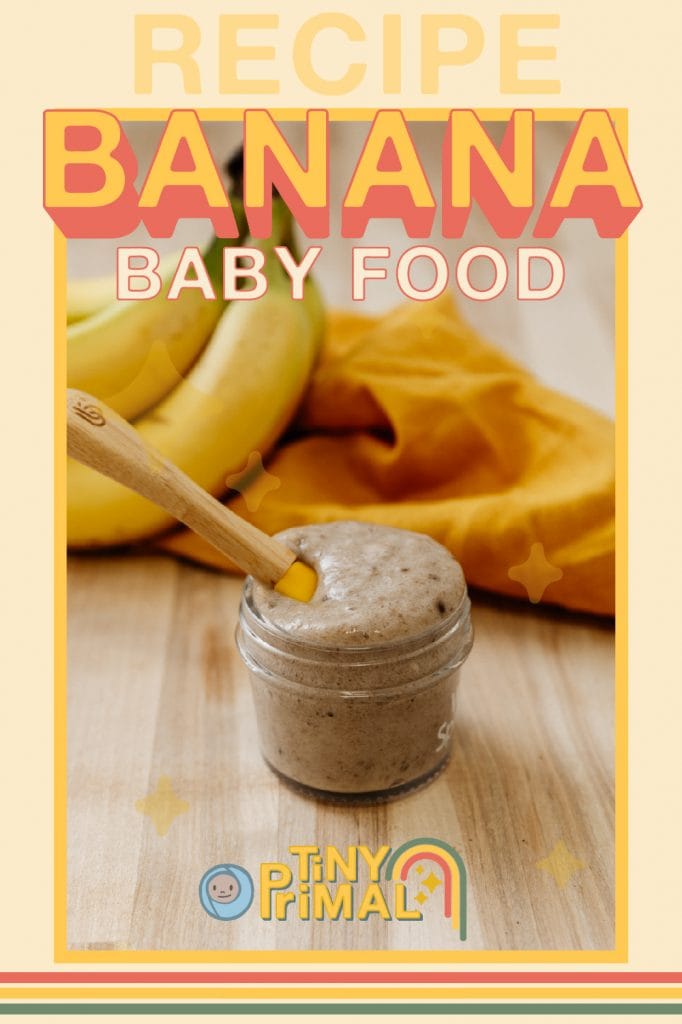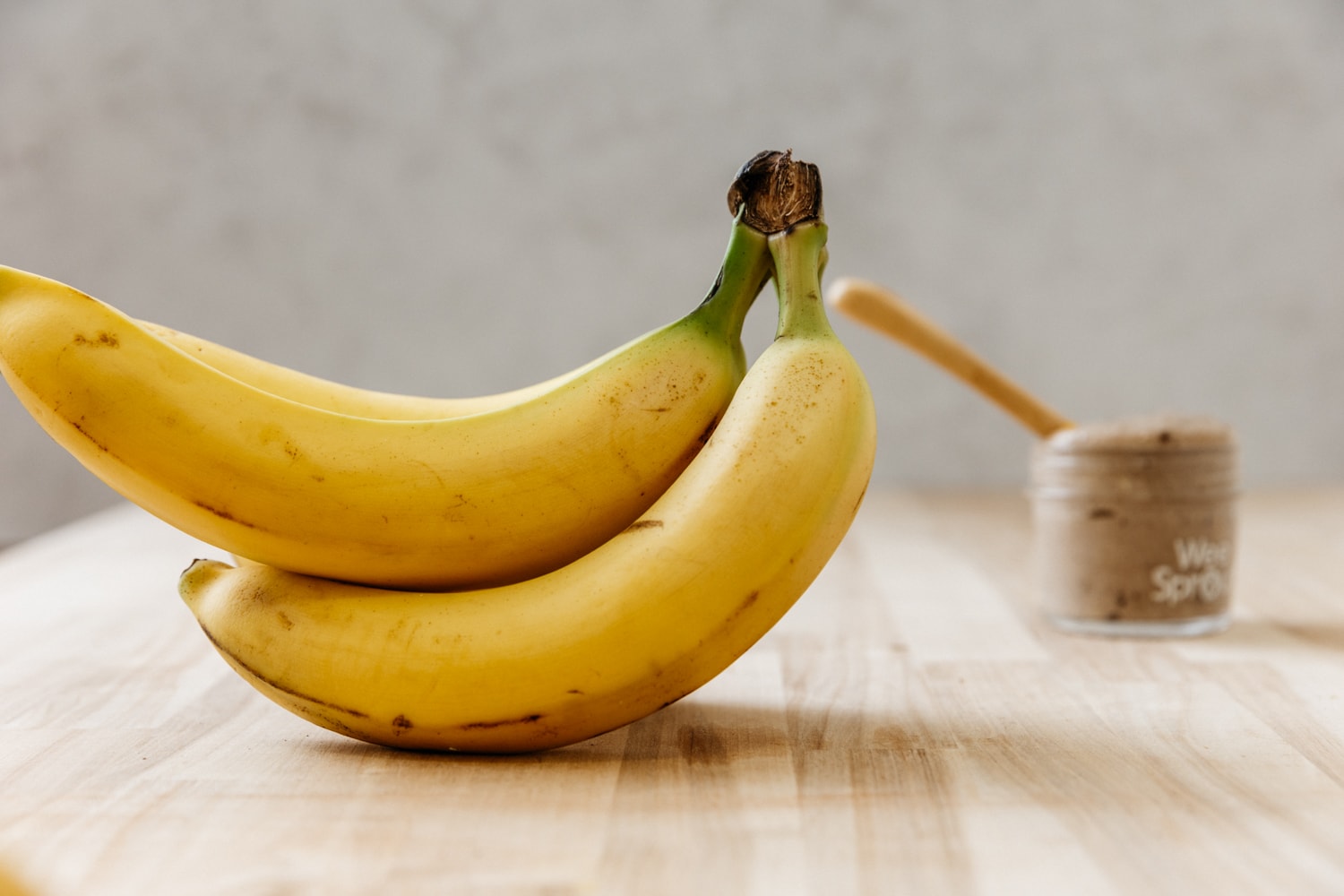Bananas are one of the most popular solid foods for babies, and this creamy banana baby food puree is the easiest way to serve up sweet and tasty bananas that your baby will love.
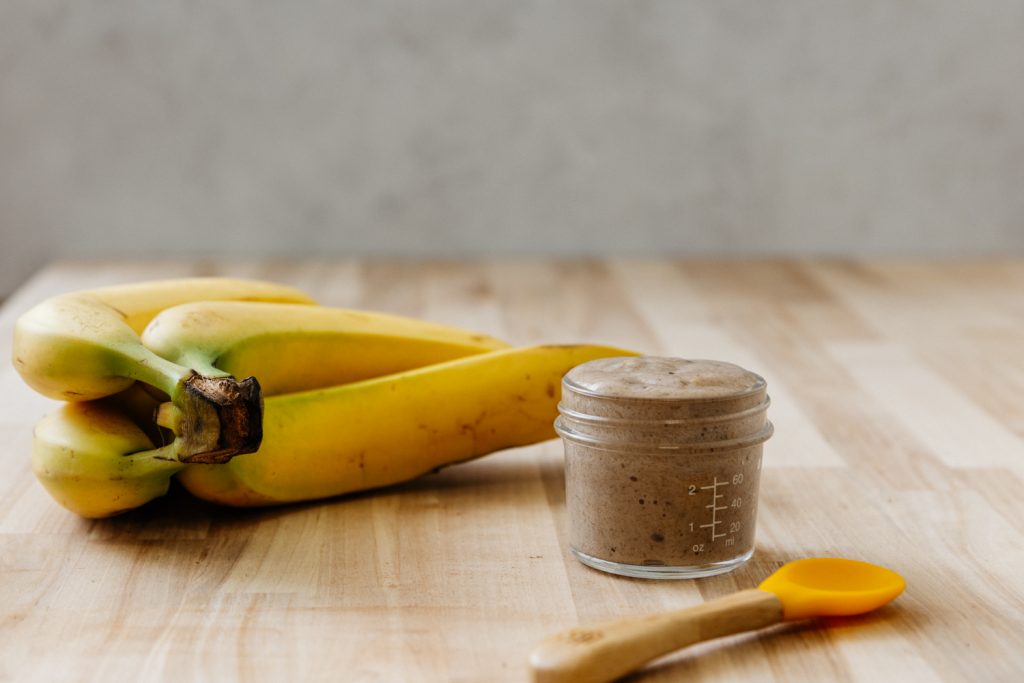
Bananas couldn’t be a more perfect food for babies. They taste delicious, they’re incredibly convenient, and they don’t need to be cooked in order to be enjoyed. In additional to these wonderful benefits, bananas pack an incredible nutritional punch that benefits both you and your growing baby.
In this post we’ll show you exactly how to prepare the easiest banana puree for baby as well as our recommendations for when to introduce the ever delightful fruit to your little one.
We’ve also got helpful tips for fridge and freezer storage, and links to awesome homemade baby food recipes that pair wonderfully with banana baby food.
What you will need
This recipe is incredibly simple and it only requires a few simple tools. Here’s what you’ll need!
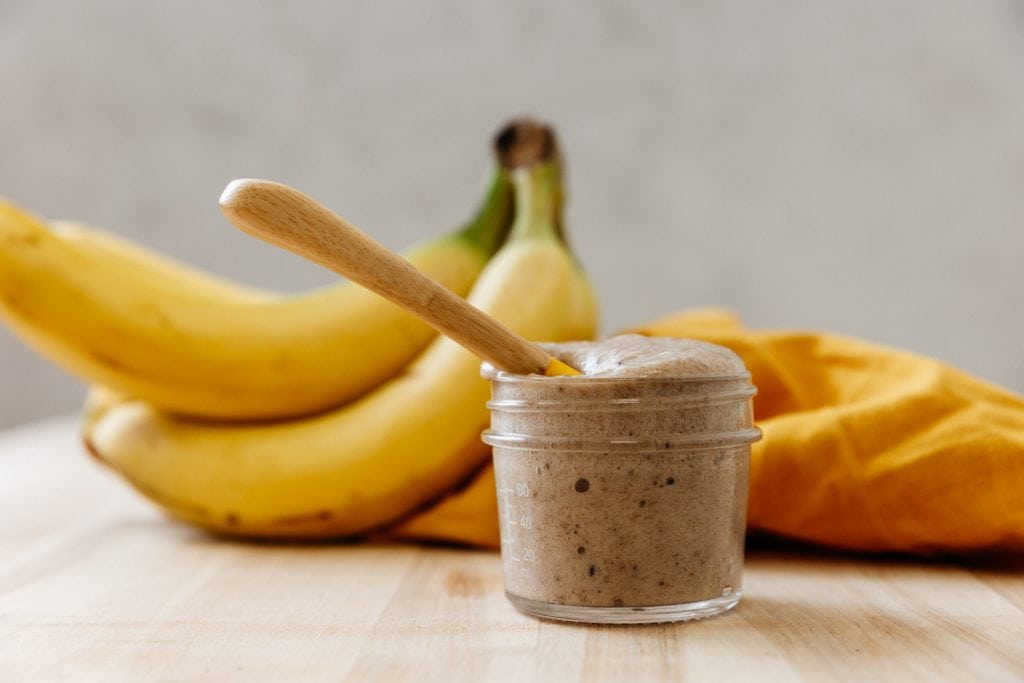
- Blender or food processor: A good blender or food processor is one of the most important tools for making your own baby food recipes at home. Either will work just fine to make sure you end up with a smooth puree. Because bananas are so soft, you can also just mash them up with a fork for this recipe, but a quality blending appliance is a great investment if you’re going to be making a lot of homemade baby food recipes.
- Baby food jars: Small glass jars are perfect for serving. You can portion out your banana puree right after blending and store it in your fridge for short term meals.
For ingredients, you’ll need:
- Bananas: This is a one ingredient recipe, and all you need is a single fresh banana. Avoid unripe green bananas because they are harder, more difficult to digest, and much less sweet. Firm, bright yellow, ripe bananas are perfect for this baby food puree.
Benefits of bananas
Bananas are full of essential nutrients that will fit right into your baby’s diet and support his or her overall health. Bananas are especially rich in:
- Potassium: an important mineral that supports kidney health and regulated blood pressure
- Fiber: dietary fiber can help curb constipation by increasing the weight, size, and softness of your stool, making it easier to pass
- Vitamin C: a vitamin essential to building a strong and healthy immune system
How to make banana puree baby food
1. Peel and chop the banana
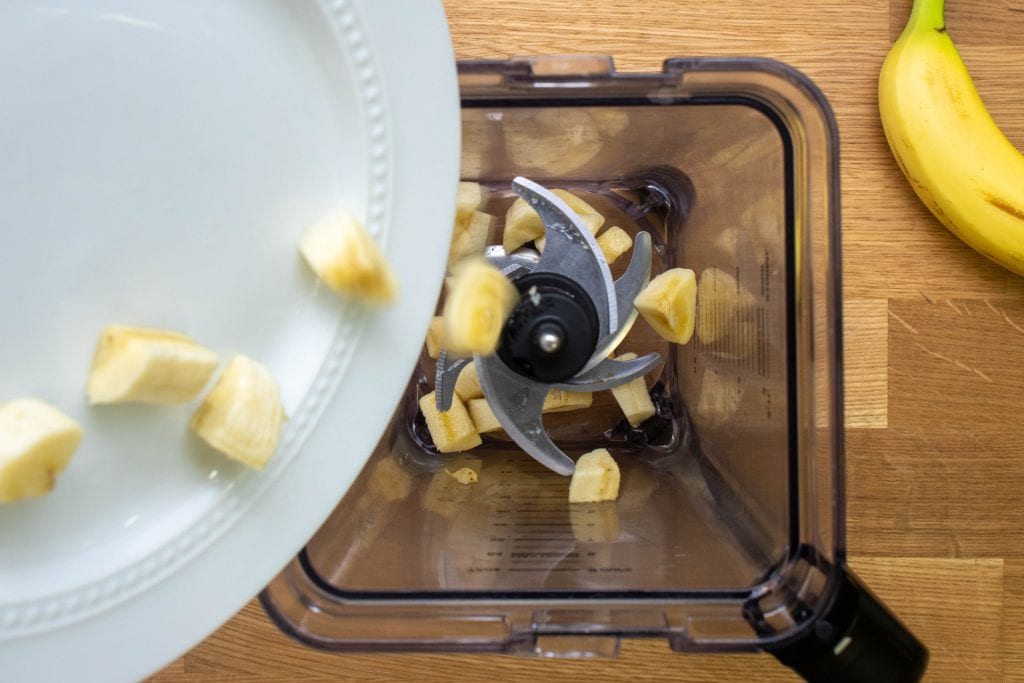
Remove the banana from its peel. Remove about 1/4-inch at each end of the banana. Then chop it into several pieces. Add these pieces to your blender.
2. Blend until smooth
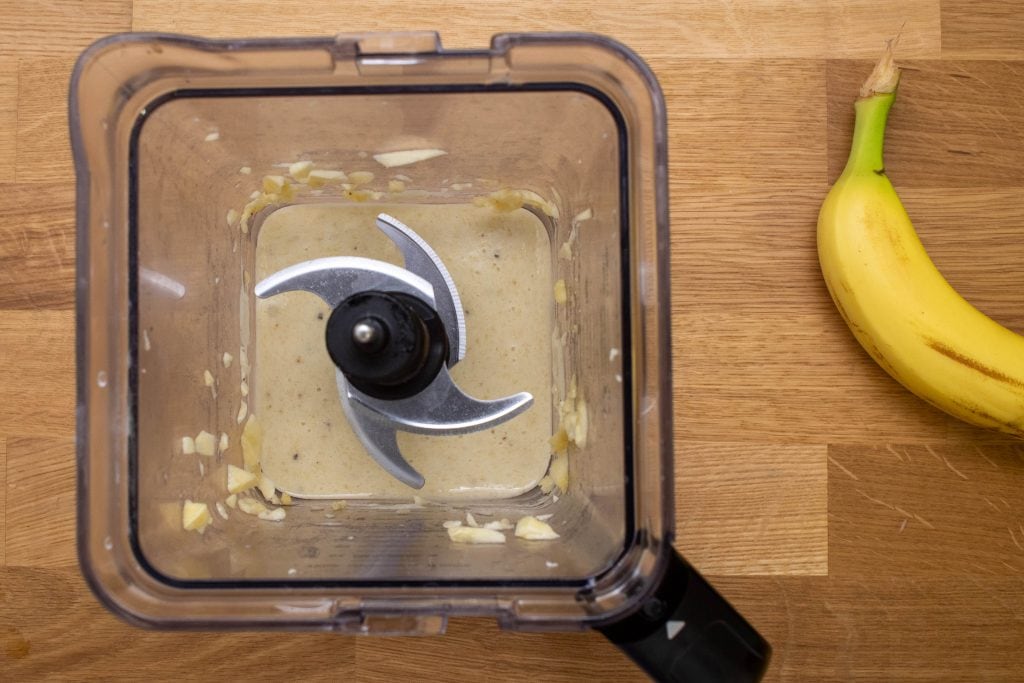
Blend your banana on high speed until it reaches a smooth consistency. A smaller blender, such as a bullet type or single serving blender would work best for a single banana. Alternatively, you can mash up your banana with a fork or potato masher instead.
It’s completely optional, but depending on your preference and desired consistency, you can even blend in milk, breast milk, or formula milk to make a richer and creamier puree for your baby.
3. Transfer for serving and storage
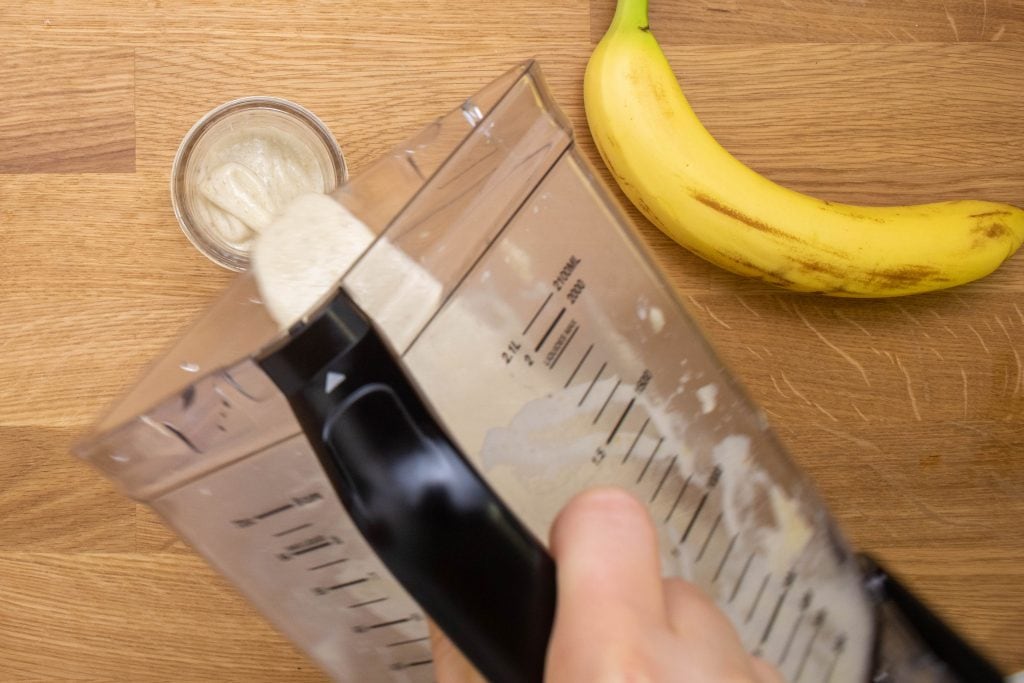
Once you get a smooth, creamy texture you can transfer the banana puree to jars for serving and short term refrigerator storage, or freezer-safe containers for longer term storage. Since it didn’t have to cook, your banana puree should still be at room temperature and can be served to your baby immediately.
How to store banana puree
You can save time later by preparing your baby food in bulk and storing it. Pureed bananas can be stored in an airtight container in the refrigerator for up to 2 days.
You can also keep banana puree in the freezer for up to two months. The best method for freezing banana puree is to mix it with a spritz of lemon juice (to prevent browning) then spooning the puree into an ice cube tray, wrapping it in plastic wrap, and freezing it. Transfer the frozen cubes to an airtight freezer bag, like a Ziploc bag, for longer term storage.
Even though they’re perfectly safe to eat, bananas can get slimy after spending extended time in the freezer. This may be an unappetizing texture for your little one, so we recommend serving those frozen banana cubes quickly.
You do not need to heat up your banana puree for the next mealtime. Just thaw it in the refrigerator overnight before serving or thaw on the countertop by adding a few cubes to a small bag and placing that in a bowl of cold water.
If you’re feeding your baby directly from a serving jar, it is also important to remember to throw away any leftovers from the same jar that came in contact with the serving spoon. Once the food has been exposed to the bacteria from your child’s mouth through saliva, it can continue to grow in the jar while stored.
The safest way to handle leftover baby food is to spoon a portion of the food into a separate dish and feed directly from that new dish. This way, you can throw away any uneaten food with much less waste.
How to choose bananas
As we mentioned, you want to stay away from green, underripe bananas for this recipe. It is ideal to shop for bananas that are ready to use today. That means when you’re at the grocery store, look for bright yellow bananas that feel firm are not punctured.
Additionally the perfect, ripe banana should be either blemish free, or only have minimal, small brown or black spots. Larger brown areas are a sign that the inside fruit may be brown, mushy and unappetizing.
Are bananas safe for babies?
Yes! Babies can start eating bananas at any point after you start introducing solid foods. Bananas do not commonly cause allergic reactions, and when ripe bananas are blended they don’t pose a choking hazard to babies.
You will want to consult your pediatrician to make sure your baby is developmentally ready for solid foods. Some signs that it may be time to introduce solids include your baby’s ability to sit up with no neck support and your baby’s interest in the food you’re eating.
We recommend introducing banana baby food at around 6.5 months of age. Check out our food introduction guide for more information about which foods are appropriate for which ages, from sweet potato puree to cooked apple, and more!
How do you prepare bananas for baby led weaning?
If you’re following a baby led weaning approach, you have a different serving options:
- You can slice your bananas into large, easy to grip pieces for your baby to hold. The soft, ripe fruit should be very easy for your baby to mash up with his or her gums.
- You can create a chunkier banana puree baby food by loosely mashing up the banana in larger pieces and giving the bowl to your little one to self feed.
Baby led weaning can help your child develop their pincer grasp (using their pointer finger and thumb to pick things up instead of their whole hand) and bananas are the perfect solid food to help support that development.
Do bananas cause constipation?
Having a constipated child is definitely one of the top things parents want to avoid. The role bananas can play in constipation has been hotly debated, but the evidence supports bananas being effective in reducing constipation. Bananas have even been studied as a means for treating diarrhea in children.
Still, bananas should be enjoyed in moderation, especially because of their high fiber content. Too much fiber can lead to very uncomfortable gas and bloating.
Banana puree combinations
Bananas are sweet and tasty on their own, but you might want to experiment with using other recipes to round out the great taste. For even more flavor, try making your own banana baby food recipes by mixing banana puree with some of our other delicious vegetable and fruit purees!
Tips to make the best banana puree
- Bananas that are a little overripe are even sweeter and easier to mash. Between underripe and overripe, it’s always best to go with a little over. You can identify these bananas by a slightly less bright yellow color and few extra small brown spots on the peel.
- Once a banana has been peeled, it starts to turn brown very quickly. You can help prevent the banana puree baby food from browning by adding a few drops of lemon juice to the puree. This is also a good idea before storing your puree so it keeps its color in the fridge or freezer.
- Mashing and pureeing will yield slightly different results. For a super smooth and creamy puree, you can’t beat the blender. The powerful blades will break down the bananas into an almost drinkable consistency. But if you want something a little chunkier, especially for older babies, mashed bananas with a fork is the easiest way to go.
- If your baby is ready for even more flavor, don’t be afraid to spice up your banana puree a little. Prepare bananas with a pinch of cinnamon or nutmeg to enhance the flavor.
